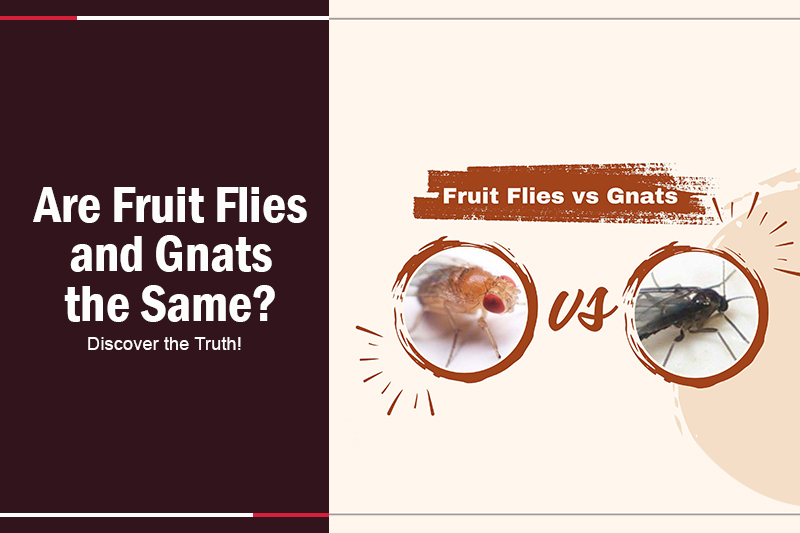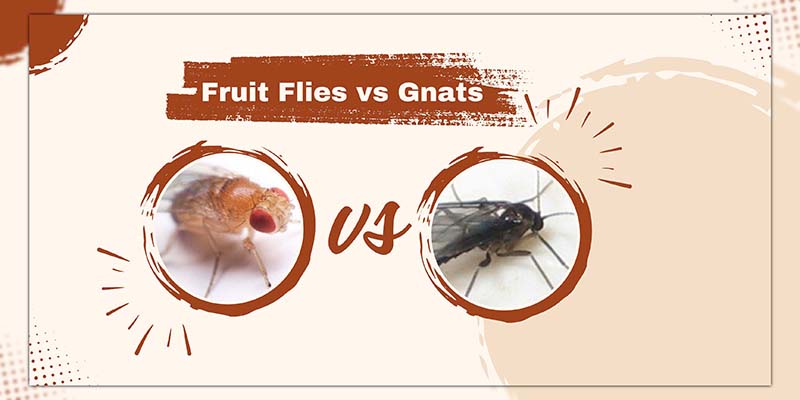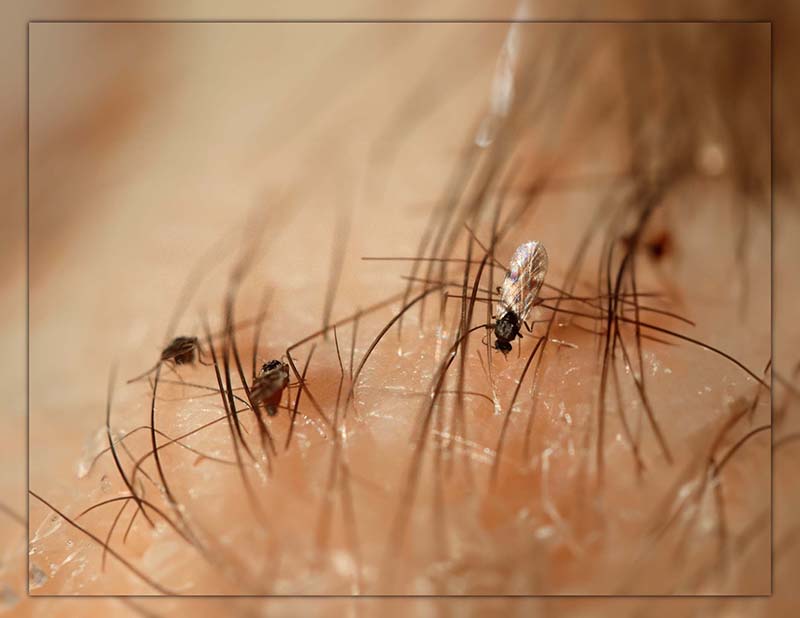The question “Are fruit flies and gnats the same?” often arises when these pests wreak havoc in homes, causing confusion and exasperation among residents. This article serves as a comprehensive guide to address such queries.
It demystifies fruit flies and gnats, emphasizing their differences, behavior patterns, and effective control methods. Readers will gain valuable insights into handling these common household annoyances, reducing confusion and inconvenience.

Are Fruit Flies and Gnats the Same?
Indeed, fruit flies and gnats are distinct from each other.
Although both are tiny insects that can fly, they come from separate families and exhibit unique features that set them apart.
What’s The Difference Between Gnats and Fruit Flies?
There are several notable distinctions between gnats and fruit flies. Gnats are part of the Nematocera family, whereas fruit flies come from the Drosophilidae family. These insects differ not only in their family classification but also in their appearance, habitat preferences, and more.
For instance, gnats typically inhabit soil and organic material areas, while fruit flies are more commonly found near decaying or unclean environments.

Classification By Species
The primary distinction between gnats and fruit flies is their species classification. Gnats fall under the Nematocera family, and fruit flies under the Drosophilidae family.
While this classification may not immediately aid in distinguishing them, it’s a fundamental difference. Despite any superficial similarities, they are not closely related.
Physical Appearance
Another significant difference is their appearance. Both are about 1/4 inch long, but their colors and physical features vary. Gnats usually have a dark gray or black coloration, while fruit flies range from tan to black and are notable for their prominent red eyes.
Gnats, sharing a family with mosquitoes, have long legs and thin wings, often mimicking a mosquito’s flight pattern. On the other hand, fruit flies, related to the common house fly, have a different body structure, lacking the visible eyes characteristic of gnats. These visual cues can help distinguish between the two.
Habitat
Their preferred habitats also set gnats and fruit flies apart. Fruit flies gravitate towards foul-smelling areas like trash bins and drains. Gnats, in contrast, are drawn to organic materials like plants and soil.
This habitat preference influences the likelihood of an infestation. Gnats around house plants might indicate soil issues, while fruit flies could suggest problems with rotten food or waste. Gnats primarily feed on plant material, while fruit flies have a broader diet, often found near rotting food or in unclean locations.

Lifespan
Lastly, their lifespans differ. Gnats live around 5 to 10 days, whereas fruit flies have a lifespan extending to about 20 days.
This information is useful when dealing with infestations, as their breeding during these life spans can rapidly increase their populations. Addressing infestations quickly is crucial to prevent their spread.
Do Fruit Flies or Fungus Gnats Have Biting Behavior?
Contrary to what some might think, neither fruit flies nor fungus gnats are known to bite humans or animals. These bothersome, non-biting flies lack the mouthparts necessary for biting or piercing skin.
Fruit flies have a unique feeding method where they pierce fruits and vegetables, releasing a fluid that breaks down the food. They then suck up the softened material or lay eggs in it. Although they don’t bite, their presence can sometimes cause allergic reactions in people, leading to itchy, red, irritated bumps, which are often mistaken for bites.
Fungus gnats, despite their name, are actually small flies and not true gnats. They’re frequently confused with other gnat species, like no-see-ums, which can cause itchy and irritating red bumps. However, fungus gnats themselves do not exhibit biting behavior
Conclusion
In conclusion, the answer to the question “Are fruit flies and gnats the same?” is a resounding no. These bothersome insects may appear similar, but they have distinct differences in appearance, behavior, and habitat preferences.
By understanding these disparities, you can better tackle pest problems in your home. For more helpful information on pest-related topics, explore our other informative blogs at Pestweek.

Calina Mabel has over 15 years of experience in the field of journalism and communications. Currently, Calina Mabel is the Content Writer for categories such as Cockroach, Ants, Bed Bugs, Mosquito, Rodent, Termite, and Flies on Pestweek.com. She aims to build content for these categories with a focus on providing valuable and accessible information to readers, in order to create the world’s largest knowledge community about Pests.
All content written by Calina Mabel has been reviewed by Emily Carter.

